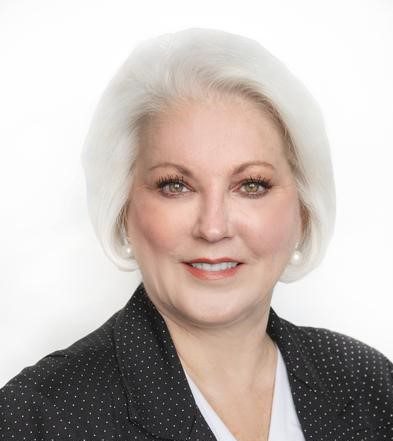Client Service Representative Etiquette
Veterinary Business Advisors, Inc.
Abstract
Being the first impression of a clinic to clients, there is no doubt that client service representatives (CSRs) play an integral role in the logistical function of clinics. In addition to that role, CSRs are also the liaison between the client and the main medical staff. Consequently, veterinary CSRs are more strategically involved with patient care than clients or even some veterinary staff realize. This creates a need for a guide towards CSR etiquette. Who should be selected for the position and how should they be trained during their time at a veterinary clinic in order to optimize their position in patient care, client education, and positive veterinary visits for both the patient and the client.
Introduction
A basic and typical veterinary practice operates with four main roles – management, veterinarians, veterinary technicians, and client services representatives (CSR). Other roles such as kennel staff, grooming, contractors, etc. depends on additional functions a practice might integrate. While much attention and training are focused on the medical staff, CSRs are often forgotten in the crucial role they play in a client’s and patient’s veterinary experience. Considering they are often the first people in contact with a client during either appointment scheduling/walk-in and the last to bid a client goodbye after checking out, they are an integral piece in the process of client communication and patient triage. By focusing more resources and time in CSR hiring, training and follow through, veterinary clinics can practice better medicine, enhance practice efficiency, and cater a more pleasant client experience. In these sections, we will primarily focus on recruiting high-quality candidates and their subsequent training in order to operate in tangent with the medical staff on patient care.
CSR Roles and Their Importance
- CSR Roles and Duties
At the fundamental level, CSRs are expected to answer communications to the clinic (phone, email, social media, etc.), schedule appointments, handle billing, provide basic veterinary education, and maintain the appearance/order for the reception area. Through these roles, CSRs are the first to meet a client and their pet and “create the critically important first impression” for the practice. While their job description might sound simple, CSR’s roles are wildly more impactful to a practice than a typical reception position.
- Patient Care and Follow Through
CSRs are the first to triage a patient whether an owner calls the clinic or walks through the door. Asking the right questions and visually gauging a patient’s condition skillfully is imperative in assessing the urgency of that patient’s needs. By accurately fielding that patient to the correct medical professional and/or scheduling the patient accordingly trickles down to the type of medical care that patient receives. This role is especially important for clinics that expect any level of emergencies to come in.
CSRs are also important for patient follow through so that sick patients receive the attention they need. Not all clients are aware of the value of rechecks, so CSRs play a role in client education along side the veterinarian and technicians. As a result of the impact they have on patient care, CSRs should have basic medical knowledge as well as training to reflect the types of situations they might encounter.
- Practice Efficiency
CSRs manage the flow of the clinic through scheduling and managing the front desk area. By ensuring the schedule is reasonable without situations such as uneven distribution of patients among doctors, excessive overbooking, and correct time allotment for appointments (wellness vs. sick vs. specialty treatments), the day flows much better. This plays a role in creating a better working environment for the clinic staff as well as imparting a better experience for the client and patient. Having hectic days might give the client the impression that this clinic is disorganized. It can also add to the stress of an already stressed-out patient making delivering patient care more difficult.
- Building Client Relationships
CSRs are integral in earning trust and loyalty from clients through conveying a desire to help and engaging with the clients during scheduling and check-out. Just by making an effort to connect with the client during phone scheduling and check-in can make a huge difference as the client feels valued and that their pet is treated as an individual as opposed to one in thousands of patients the hospital helps. Leaving that personal touch helps create goodwill.
The Hiring Process
- Who makes the best candidates?
Usually, employers think people with veterinary experiences will make the best CSRs since they already have an understanding on how clinics functions and even some basic medical knowledge. However, think about the bulk of a CSR’s job – it is costumer service wrapped neatly with a lot of multi-tasking and organization. To hire the best candidate for the position, clinics must look for the candidates with adequate experiences in those areas. Previous experiences such as working in restaurants, fast food, being a flight attendant, etc. are helping. People who have worked these jobs understand how to work with various personalities, multi-task, and maintain an positive attitude. The knowledge base details can be imparted through training. It is easy to teach someone all the options for heartworm control, but it is not easy to teach someone how to maintain a calm front desk area with two phones ringing and clients waiting to be helped.
- The hiring process before the interview
This process should look very similar to how other positions are recruited; however, it is important to go through the steps thoroughly. Create of list of skills and characteristics that are of value to you and your practice and separate them into “must-haves” and “nice-to-haves”. Pay special attention to phone screens even if it is just calling them to schedule an interview. Based on how they conduct themselves over the phone and/or what their voicemail sounds like can say a lot about a candidate. This is especially since they will be spending much of their time on the phone with clients. If you leave a message, their promptness in returning your call can also be an indicator of professionalism although this should not be read into too carefully if the overall candidate is spectacular. Be sure to check references as they can be the best way to gauge your candidate from someone else’s experience working with them. It is a step that is commonly skipped but can add value to your hiring process. While it might take time to call managers, it will ultimately save time since less hours are spent interviewing lackluster candidates or hiring someone who is not a good fit.
- What questions should you ask during the interview?
Since hiring might take place out of industry, it is important to gauge the candidate’s willingness to work with animals, medicine, and all the comes with veterinary medicine. Asking a simple question such as “why do you want to work in an animal-care facility?” can tell you a lot about if the person sitting across from you truly loves animals. On the extreme end, it is important to know that this person is emotionally equipped to handle euthanasia. Gauging their experience is important as CSRs are part of the team who consoles an owner after they lose their pet. If they personally have not experienced euthanasia but are ethically in-line and willing to take on the consoling role, then this candidate has a good foundation after some experiences and training. One basic question is asking what their opinion on euthanasia is.
Next, are the technical questions. CSRs should be proficient with the computer, phone, and be able to learn how to operate equipment such as printers, fax machines, and various newer technologies such as headsets, etc. The bottom line is that they should be able to handle technology, be able to multitask between them, and learn new technology. Simply asking about their experience with these modalities can elucidate useful information. Additionally, CSRs sometimes hold a social media role in some practices. If this is the case for your practice, asking if they are familiar with popular platforms such as Instagram, Facebook, and YouTube.
Arguably the most important are the soft skills. Examples include being multitasker, organized, compassionate, understanding how to de-escalate situations, prioritization of tasks, etc. The best way to gauge these skills are experience questions (“Tell me about a time…”) and case scenarios (“How would you respond if…”). You might want to gauge how they would handle an angry client, a person in need of accommodations, non-English speakers, clients with financial difficulties, etc.
Lastly, seeing how the candidate presents themselves during an interview can be the most telling portion. Do they make eye contact? Do they speak well? Do they smile? How did they greet you and your staff? These are all representative to how they will interact with your clients in the future. Once you have hired someone who will excel at being the face of your practice, next is training them to be able to contribute to patient care.
CSR Training: Patient Triage
- Emergency calls
Whether triage is done over the phone or in-person, the CSRs primary job is to first differentiate a true emergency from something that can wait. If any of the following situations are mentioned, the client should bring the pet to the closest emergency room immediately:
- Non-stop bleeding
- Difficulty breathing
- Severe vomiting/diarrhea
- Toxin exposure
- Seizures, altered mental status, or collapse with noticeable behavioral change afterwards or inability to stand-up
- Inability to urinate
- Severe pain
- Ingestion of inedible foreign material followed by vomiting, constipation/diarrhea, lethargy and/or pain
If the situation has been determined to be non-immediate, more time can be taken to gather information about the patient and their situations. It is important to note that it is not the CSR’s job to diagnose the disease; therefore, communication should be strictly information gathering. Important information include:
- Patient signalment (species, age, sex, breed, reproductive status)
- When did the symptoms start and how long have then been going on for?
- How is the pet doing in terms of eating, drinking, urination, defecation, and behavior?
It is important to ask open-ended questions. Simply starting off with the question “tell me what’s going on” can help get a good preliminary view of the situation. More specific questions can be asked when the exact problem is known and as CSRs gain medical experience to know what questions are helpful to ask. Once all the information is gathered, an experienced technician or a doctor should make the judgement call of how urgently the patient should be seen. However, at the end of the day, a physical examination by a veterinarian should always be offered.
Patient triage for a CSR can be very similar to a technician taking a history. This is especially true if all the technicians are busy, but a client/patient is in distress and needs help quickly. This provides an opportunity of team building where technicians and CSRs can be trained together or an experienced technician can train CSRs. As a part of this training, new CSRs should have the opportunity to observe a technician or doctor take a history from a client to understand what to ask and how to ask.
- Sick appointment visits
CSRs can contribute to medical care of sick patients by identifying potential infectious diseases. Animals that observed to be coughing, sneezing, and puppies with diarrhea should be place in a room immediately to prevent spread in the lobby. Before the appointment, sick patients can be triaged similarly to emergency visits to ensure there is not something going on that the owner is not aware of.
- Wellness appointment visits
Annuals and semi-annuals do not require so much patient triage for CSRs; however, it is important that clients are made aware to bring/send records if the practice does not already have them. This will greatly expediate appointments.
CSR Training: Client Education
Client education does not just happen in the exam rooms. They happen when the client makes the first call. CSRs are in the unique position to communicate the value of veterinary physical exams and diagnostics. Spending a few extra friendly minutes with a new client can ensure a booking a potential lifelong patient. Even better, if the owner mentions that their pet is anxious during veterinary visits, this is their first vet visit, their pet is animal/people aggressive, or any other information, the CSRs can provide guidance in catering the most stress-free visit possible.
After the appointment is finished and the client is checking out, CSRs have the opportunity to schedule the client’s next exam. This is a chance to communicate how important yearly visits or rechecks are. Unbelievably, clients tend to confide in CSRs asking if the diets, medications, or overall treatment plans really work or ask them questions they were too shy to ask the medical team. Having basic medical knowledge can go a long way in educating the client when the veterinarian or technician is not even in the room. The added benefit is that the CSRs can most easily relay the information in layman’s terms. While veterinarians and technicians are trained to communicate well with clients, jargon tends to slip out especially if appointments are rushed and overbooked.
Working as a Team
With CSRs being in the front of the house and technicians and doctors being in the back of the house, there is literal physical distance between the two teams. Additionally, some clinics might be familiar with frustrations CSRs and technicians might have with each other that ultimately stems from miscommunication. This begs the question of how the teams can work together?
Medical training for CSRs
One common complaint technicians often have is that CSRs rely too heavily on the medical team to answer simple questions or that something was done incorrectly because of a lack of medical knowledge. While it is unreasonable to expect CSRs to be as medically knowledgeable as technicians, increasing the staff’s overall medical competencies will only help patient care and client education. Therefore, CSRs should sit in on technician training, be offered CE opportunities, as well as have opportunities to train as a technician if they decide they want to be more involved with patient care. This allows for mobility within the clinic and help cater to individual future career goals (technician/veterinary school). Veterinarians often bring a head technician with them to conferences in hopes that this technician will be able to train the rest of the team. CSRs should be treated in the same way so the entire front staff can grow together.
Technology
Living in the twenty first century with millennials quickly becoming the main workforce, technology cannot be ignored. Often when there is disagreement or discord, it is due to a lack of communication. With widely available and relatively cheap cost for Bluetooth earpieces and walkie talkies, the front and the back staff can easily communicate without having to walk back and forth which takes time and energy. Anyone can contact any one person or everyone in a certain area to ask a question, ask for help, or give updates. Additionally, computer systems like Instinct which tracks inpatient care helps everyone understand how a patient is doing, what treatments have been done, as well as updates. CSRs can simply search this information from a computer as opposed to doing the dance of finding an available technician. Team members can leave notes to each other as well through this software.
CSRs in Telemedicine
Telemedicine is certainly gaining more traction, especially after a historic pandemic. Even as society moves back to normal, some trends from 2020 are left to stay, and this includes the ability to provide more services via an online format. Especially since millennials are quickly becoming the largest market, virtual care is in demand.
While telemedicine is new to the veterinary field, CSRs can help facilitate its process. Luckily, from a CSR’s standpoint not much is different from in-person care. CSRs will need to be diligent in their organization in knowing which appointments are telemedicine and which appointments are in-person. Which telemedicine appointments are for a technician and which appointments are for doctors? This is especially important since they will be responsible for sending out information regarding how the client can log in and what materials/information they should prepare. After the practitioner and client is finish with the appointment, it is the CSRs job to handle payment. The easiest way to handle this is to ask the client to provide a credit card ahead of time. This effectively “cuts the middle man out” by allowing the practitioner and client to join the call and leave the call without needing CSR involvement unless another appointments needs to be scheduled.
References
- Conrad, B. C. (2017, October 18). How to hire, train receptionists better. DVM 360. https://www.dvm360.com/view/how-hire-train-receptionists-better
- Donnelly, A. (2021, June). The Gift of Gab. Today’s Veterinary Business. https://todaysveterinarybusiness.com/csr-communications-training/
- Donnelly, A. D. L. (2016, December 29). Three Ways Client Service Representatives Can Build Client Loyalty. DVM 360. https://www.dvm360.com/view/three-ways-client-service-representatives-can-build-client-loyalty
- Driesse, Jess. Personal Communication (2021)
- Ekola, K. (2021, June 15). 5 Steps to Improving Veterinary CSR Efficiency. Vet2Pet. https://vet2pet.com/2021/04/5-steps-to-improving-veterinary-csr-efficiency/
- Felsted, K. F. (n.d.). Critical Aspects of Effective Hiring. Today’s Veterinary Practice. Retrieved June 18, 2021, from https://todaysveterinarypractice.com/practice-building-critical-aspects-of-effective-hiring/
- Frederick, C. E. (2014, October). The Art of Telephone Triage. Clinician’s Brief. https://www.cliniciansbrief.com/article/art-telephone-triage
- JOB DESCRIPTION for Customer Service Representative (CSR) . Manchester Veterinary Clinic . (n.d.). https://www.manchestervetclinic.com/sites/site-6369/documents/CSR%20MVC%20Job%20Description.pdf.
- Miller, L. R. J. (2005, April 19). Simple forms can help train new hires. DVM 360. https://www.dvm360.com/view/simple-forms-can-help-train-new-hires
- Rowe, R. C. (2020, April 28). A starting guide for new receptionists. DVM 360. https://www.dvm360.com/view/starting-guide-new-receptionists
- Stafford, D. (n.d.). Emergency and Critical Care – Receptionist tips. VSPN. Retrieved June 18, 2021, from http://www.vspn.org/Library/Misc/VSPN_M02367.htm
- Veterinary Practice News Editors. (2017, July 24). 7 Interview Questions for Veterinary Receptionists. Veterinary Practice News. https://www.veterinarypracticenews.com/7-interview-questions-for-veterinary-receptionists/
- Veterinary receptionists: Anticipate clients whens, whys, and hows. (2016, June 8). DVM 360. https://www.dvm360.com/view/veterinary-receptionists-anticipate-clients-whens-whys-and-hows
- Veterinary receptionists’ vital role in emergency medicine. (2018, November 20). DVM 360. https://www.dvm360.com/view/veterinary-receptionists-vital-role-emergency-medicine









